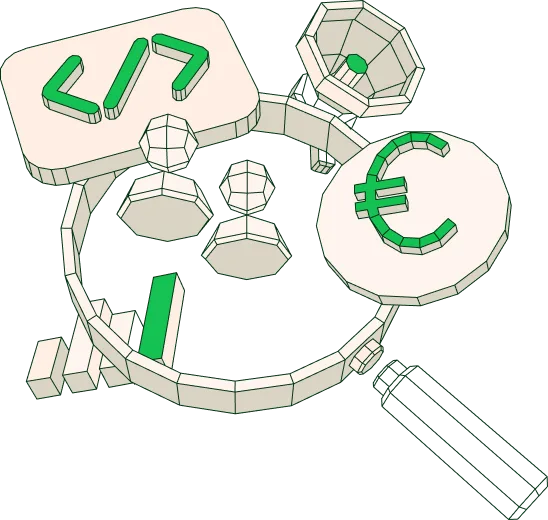What is pay when paid and why is it used?
What is pay when paid and why is it used? Pay when paid sounds simple; "I will pay you as soon as I am paid myself". Yet there is a whole world behind it. In this article, you will discover exactly what a pay-when-paid clause means, where you come across them, the risks and benefits, and how to protect yourself legally as well as professionally. At the end, you will not only understand the agreement, but especially the logic behind it, and whether it is a smart move for your business.
The basics of pay when paid
With a traditional payment term, you agree that the invoice will be paid within, say, 30 days, regardless of what happens further down the chain. Pay when paid flips that order. The main contractor or intermediary pays the subcontractor, supplier or freelancer only after the end customer has settled. In other words, you only get paid once the upstream link gets paid.
In practice, you see this especially in sectors with long chains and unpredictable money flows. Think of construction projects, event productions, IT outsourcing or large marketing campaigns where agencies have several layers under them. The main contractor wants to protect its cash flow by linking the payment obligation to when the money comes in.
Contractualisation
A pay-when-paid agreement is not a ghost clause in general terms and conditions. It must be explicit in the contract. Consider a clause such as:
"Payment to the contractor shall be made within five working days after the client has received the corresponding invoice from the main client and paid it in full to the contractor."
It is important to clearly define when the condition is fulfilled. Upon partial payment, upon end-client approval, or only when the money is in the bank? Vague wording can lead to discussion later, for example if the end customer rejects work.
Difference with pay if paid
Do not confuse pay when paid with pay if paid. With pay if paid, the risk lies entirely with the subcontractor. If the main contractor itself is not paid, it never has to pay you. In many European countries, this is legally dubious or even prohibited, as it places disproportionate risk on the smallest party. Pay when paid is about timing, not about definitively getting money or not. As soon as the above invoice is paid, you are entitled to payment.
Why do companies choose this construction?
Cashflow protection is at the top of the list. Large projects require substantial pre-financing such as material costs, wages, insurance. If, as a main contractor, you also have to advance each intermediate supplier out of your own pocket, that can kill liquidity. With a pay-when-paid clause, you shift the financing burden down the chain.
A second reason is risk spreading. Suppose the end customer goes bankrupt, the main contractor does not want to be stuck with a bunch of paid subcontractors while no more revenue comes in. He or she mitigates his or her own downside by making payments contingent on money received.
Third, the clause encourages subcontractors to help with quick delivery and correct invoicing. After all, the sooner the work is approved and the end customer pays, the sooner everyone gets paid. This creates a shared interest in an efficient workflow.
What do you pay attention to when accepting the clause?
For the main contractor, this clause has a clear advantage, but for subcontractors it is important to consider the following: the cash break shifts to you. As a subcontractor, you need to assess whether you can bear the longer payment period. It depends on your margin, reserves and the predictability of the end customer.
Always ask yourself:
- How solid is the end customer's creditworthiness?
- Does the main contractor have a history of timely payments?
- Does the contract include a maximum period in which you are guaranteed money, regardless of the status with the customer?
Smart entrepreneurs negotiate a double safeguard. They accept pay when paid, but with a long-stop date. For example, "no later than 90 days from invoice date, even if the customer has not yet paid". This prevents your cash flow from being frozen indefinitely.
Legal snags and eyes in Holland
Dutch contract law has wide contractual freedom, but also limits. A clause may not be unreasonably onerous, especially if there is a power difference. In B2B contracts, there is much more freedom than in consumer law, yet a pay-when-paid agreement can be tested for reasonableness. Dutch judges then look at sector usage, bargaining power and proportionality.
If you work as a professional in construction, you have to deal with the Wet ketenaansprakelijkheid. Main contractors remain liable for subcontractors' payroll taxes and pensions. If the end customer never pays, you as a subcontractor can, in theory, still demand that social security contributions are paid. So the clause does not protect against all risks.

Case study in construction
A contractor acquires a multi-million dollar project to renovate an office building. He subcontracts the electrical work to an SME installer. The contract states that the installer will be paid within five working days after the developer pays the certified partial invoice.
During the project, the developer runs into delays, causing payments to arrive later. As a result, the installer has to bridge five weeks, instead of the original two. Because he had calculated this in advance with a credit facility from his bank, he can continue to pay suppliers and staff. Without that buffer, he would have run into liquidity problems.
Financing solutions
If you cannot fund the delay internally, there are three common solutions:
1. Factoring: you sell your invoice to a factoring company, which advances 80-90 % almost immediately.
2. Bank credit: an overdraft bridges the period until payment.
3. Project financing via crowdlending: private investors lend money for specific jobs.
Be careful because for these solutions, you pay interest or fixed amounts, which melts your margin. So do a cold-hard calculation of which is more advantageous. A lower price without pay when paid or a higher rate with and external financing.
Alternative clauses
Some parties work with "pay when certified". The subcontractor is paid as soon as the work is approved by an independent party, regardless of whether the customer has already paid. This reduces waiting time and places less dependency on the end customer. Another variant is "partial pay when paid", where a percentage (say 50%) is paid regularly and the rest after payment by the customer. This way, you divide the pain between parties.
